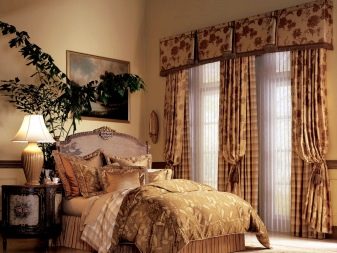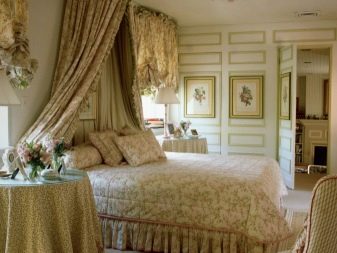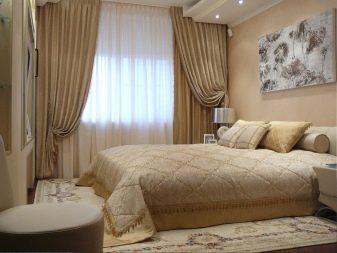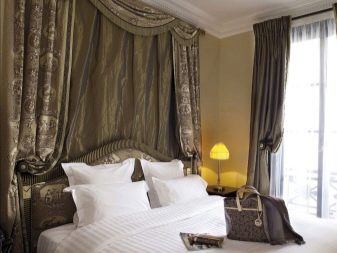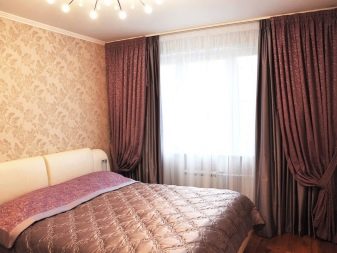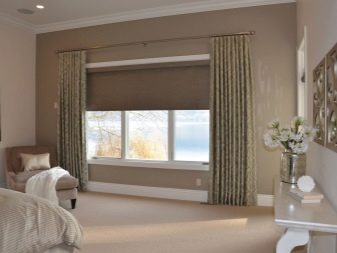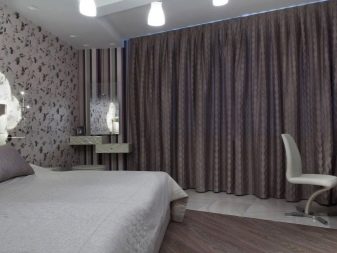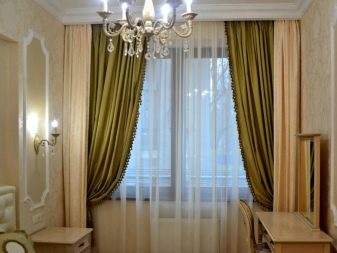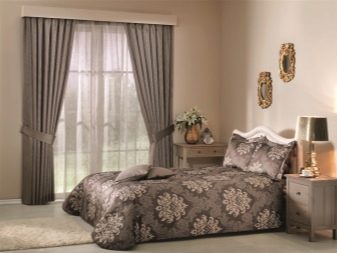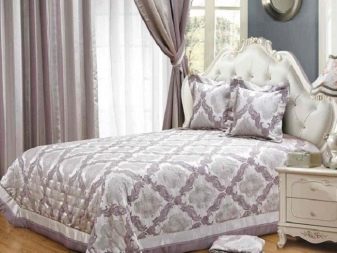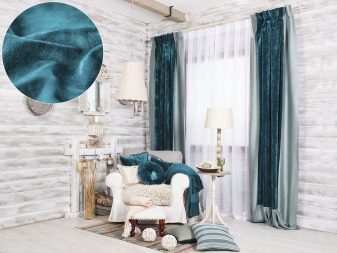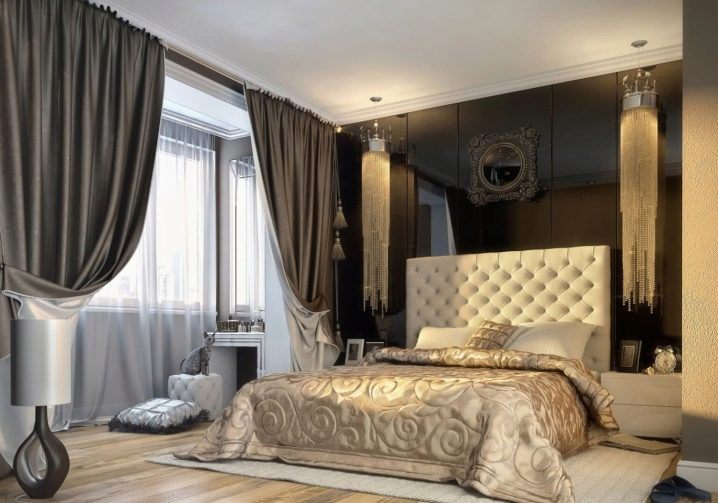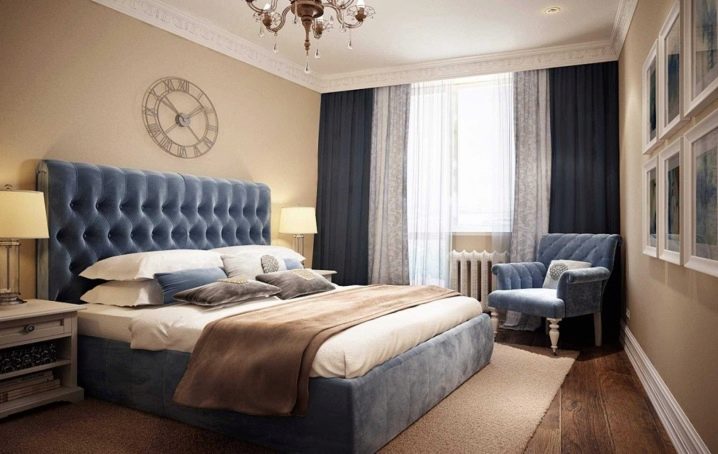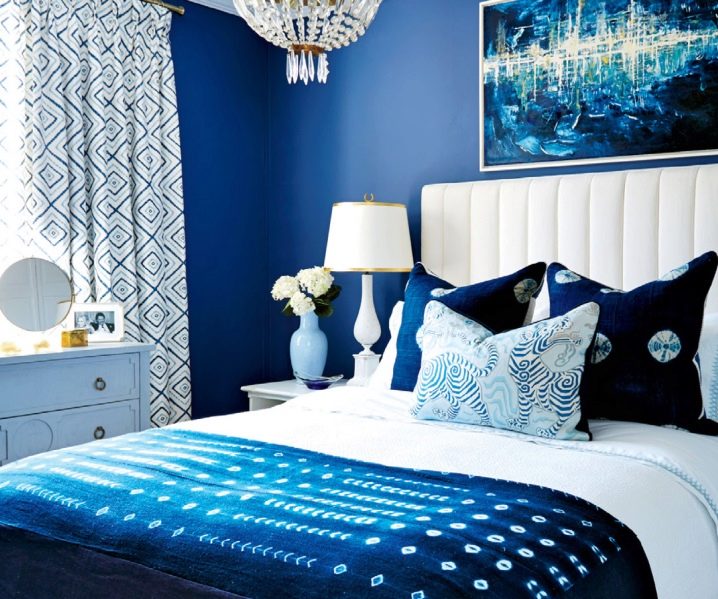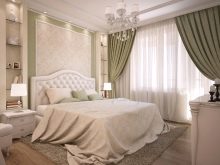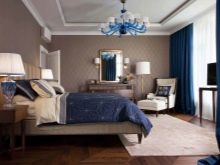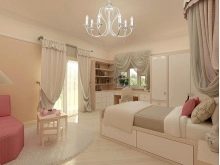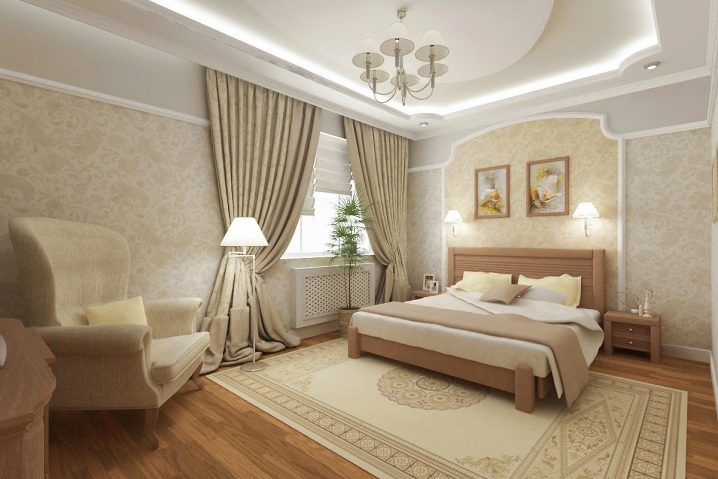Choosing blackout curtains for the bedroom
Comfort and coziness in the bedroom largely depends on the details of the room design. In this regard, curtains have one of the most important (after furniture) meanings - they will help fill the sleeping room with a pleasant and relaxing atmosphere.
Peculiarities
The bedroom window needs curtains, and the bedroom itself needs the perfect window decoration.
The classic technique is a tandem curtain with or without a lambrequin and curtains.
More modern options are curtain models:
-
Roman;
-
Japanese;
-
roll;
-
bamboo.
However, we are talking about classic blackout curtains in the bedroom, covering the windows:
-
from the sun's rays;
-
night street lighting;
-
inappropriate glances of passers-by and neighbors from the house opposite.
Before going to the store for fabric, you need to understand: curtains are not only curtains for the window, they are a full-fledged element of interior design. It is they who are called upon to give a finished look to the room, to create or enhance the feeling of comfort and tranquility.
Materials (edit)
The choice of fabric for curtains for the bedroom is not much different from the selection of curtains for other windows.
If traditional textile curtains are used in the bedroom, then you should familiarize yourself with the types of fabrics suitable for making curtains and curtains.
To complete the picture, you must immediately clarify:
-
curtains - curtains made of dense fabric that does not transmit light, whose main functions are to complement the design, protect from the sun and the penetration of prying eyes from the street at night;
- curtains - this is what we are used to using as a decorative window decoration: graceful translucent weightless fabrics.
Curtains are hung over a translucent curtain - as the second and main protective shade cloth. Textiles for blackout curtains should be darkening lighting, blocking access to prying eyes and performing a decorative function.
-
Blackout - revolution in the textile market. 90 or 100% opaque fabric of various weights and colors: from pastels to dark and black tones.
- Velveteen - velvety fabric with a wide or narrow ribbed, made from natural cotton or blended fibers. They are used in the design of bedrooms in a variety of interiors: from classic to modern and high-tech.
-
Atlas - noble textiles with a glossy or matte sheen made of silk and semi-silk fibers - accentuated sophistication in the interior, a royal accent.
- Silk - the harsh necessity of oriental interiors, without its noble overflows, soft brilliance, it is impossible to imagine palace and modern interiors of the corresponding style. Silk made from natural fibers is prone to fading, in contrast to the artificial look.
-
Taffeta - iridescent, smooth or embroidered fabric, often with a "chameleon" effect, made of silk or cotton, acetate or polyester.
- Jacquard - textiles made using a special technology, in which a special interweaving of threads creates a monochromatic or colored pattern. It is this feature that does not allow using the fabric in small rooms - its beauty looks advantageous at a distance (in large spaces).
-
Velvet - royal curtains, a sign of aristocracy and prosperity. Made from natural, synthetic and blended fibers. Ideal for classic interiors.
A hundred years after its appearance, curtains are still in demand and necessary.
Design
When choosing textiles for making curtains in the bedroom, first of all, you need to think about mixing (mixing) colors.
Do not forget about moderation - the laws of design require the presence of no more than three colors in one room.
In this case, not only colors should be combined, but also textiles with furnishings. For example, tulle looks perfect with wrought iron or wood bed elements, but does not match velor or leather headboards at all.
-
Dark canvases of curtains are emphasized by monochromatic curtains of light colors. You can choose a luxurious organza for curtains made of taffeta with embroidery or satin.
- Monochrome. With a monochrome solution, curtains can serve as a decorative accent if the fabric is one or two shades deeper than the main one.
-
Classic can benefit from the use of contrasts, but also keep in mind the rules of moderation. If you "replay" with contrasting colors, you can spoil all the work. Here, for example, is a bedroom that has been designed with the perfect combination of beige and navy blue palettes.
- Combination. When starting to decorate a bedroom in such a solution, the most important thing is to choose the perfect combination of different colors, a table of combined shades can help with this. If offhand, then green and pink shades, such as emerald and ash rose, will be ideal partners of gray.
There are so many options that endless spaces for creativity open up before the owner of the bedroom.
How to choose?
When choosing textiles for sewing curtains, you need to focus not only on your own taste, but also on the surrounding content, design. The fabric and the model should be combined in interior and color solutions, and also match the furniture. In addition, the fabric must be:
-
practical;
-
durable;
-
fairly opaque;
-
resistant to ultraviolet radiation;
-
dense, but well draped - hard curtains will bulge ugly.
In addition, do not discount the texture of textiles - it is unlikely that frivolous muslin curtains or heavy velvet in provence will look appropriate in a classic interior. Ideal - when curtain textiles are used in furniture upholstery and other elements.




